ECON 0150 | Economic Data Analysis
The economist’s data analysis skillset.
Part 1.5 | Bivariate Relationships
Cross-Sectional Relationships
Q. Is there a relationship between GDP and coffee production?
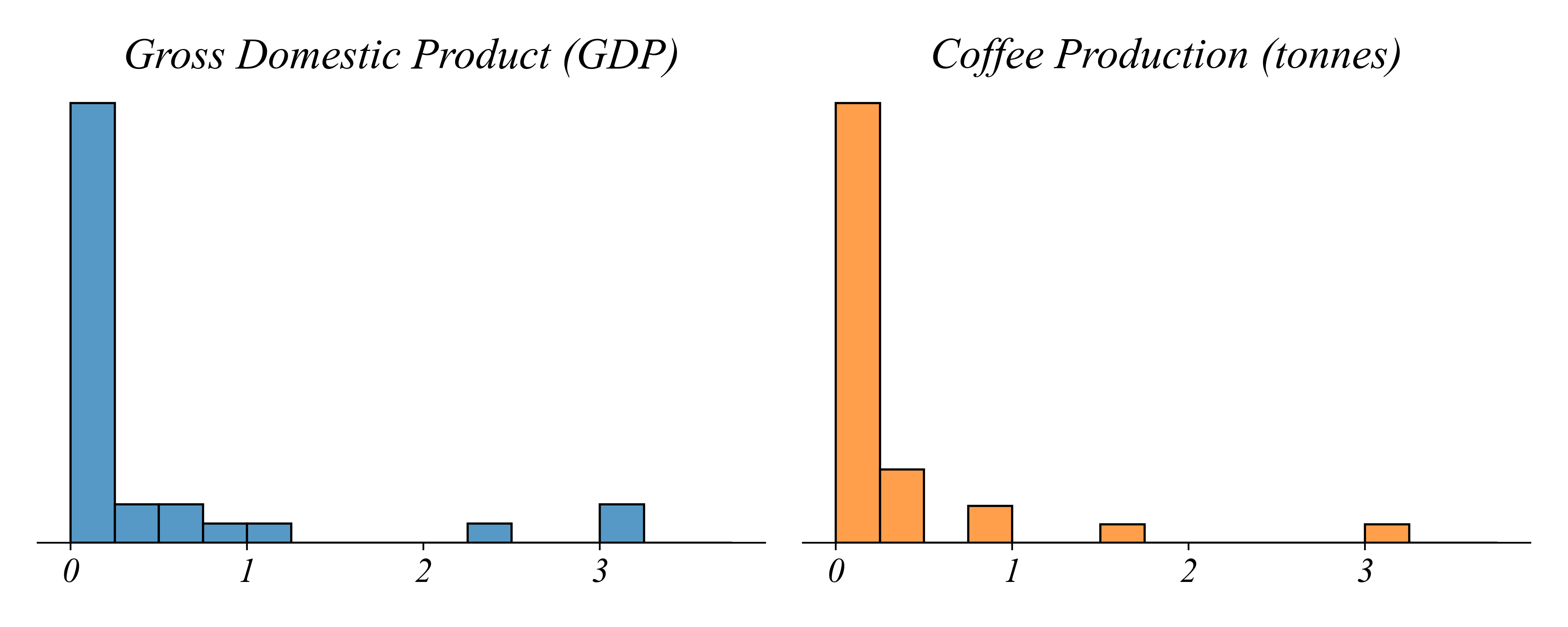
> maybe, but it’s hard to see
> lets use a two dimensional graph
Cross-Sectional Relationships
Q. Is there a relationship between GDP and coffee production?
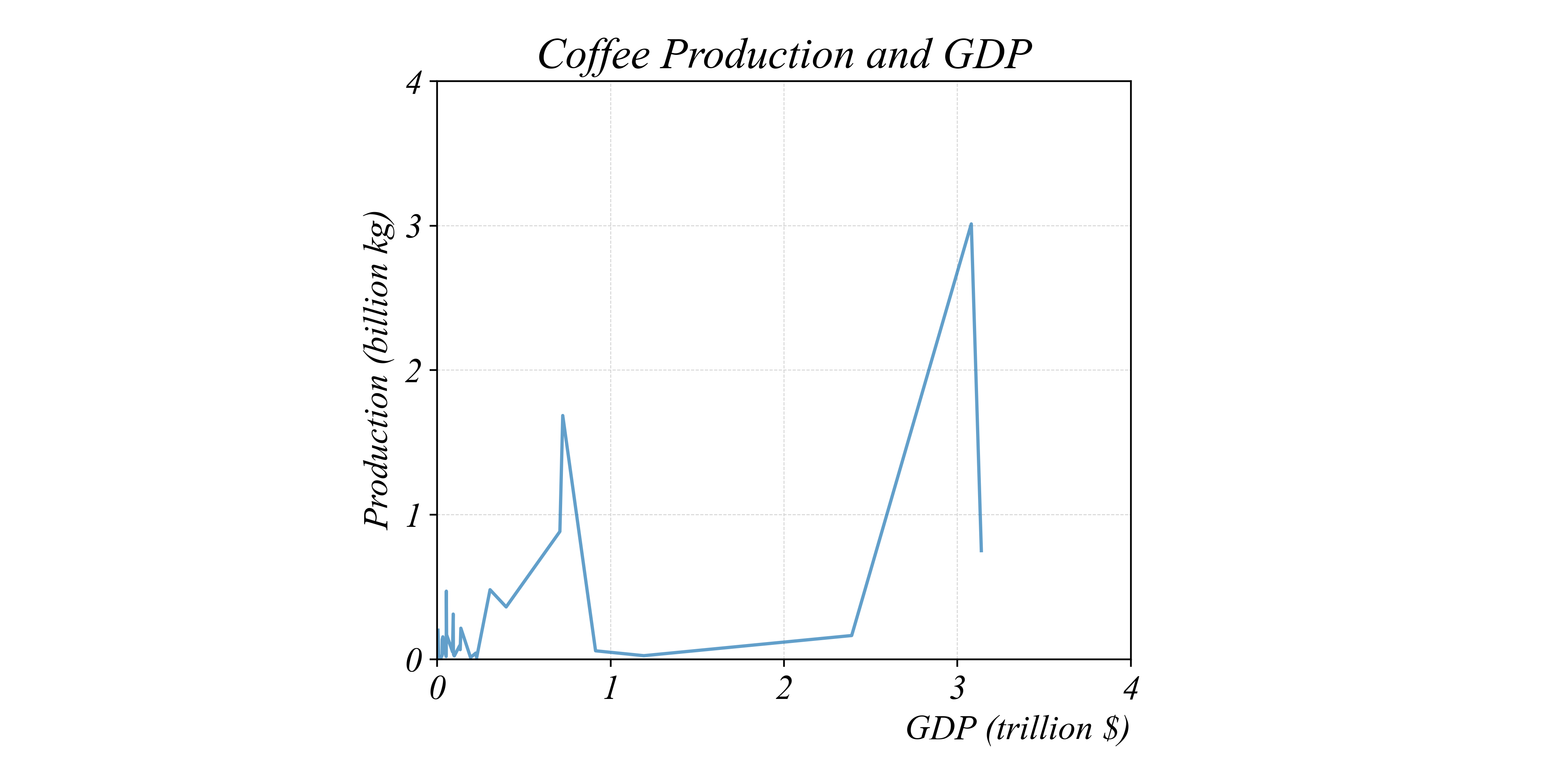
> two dimensions is nice, but the points have no meaningful relationships
Cross-Sectional Relationships
Q. Is there a relationship between GDP and coffee production?
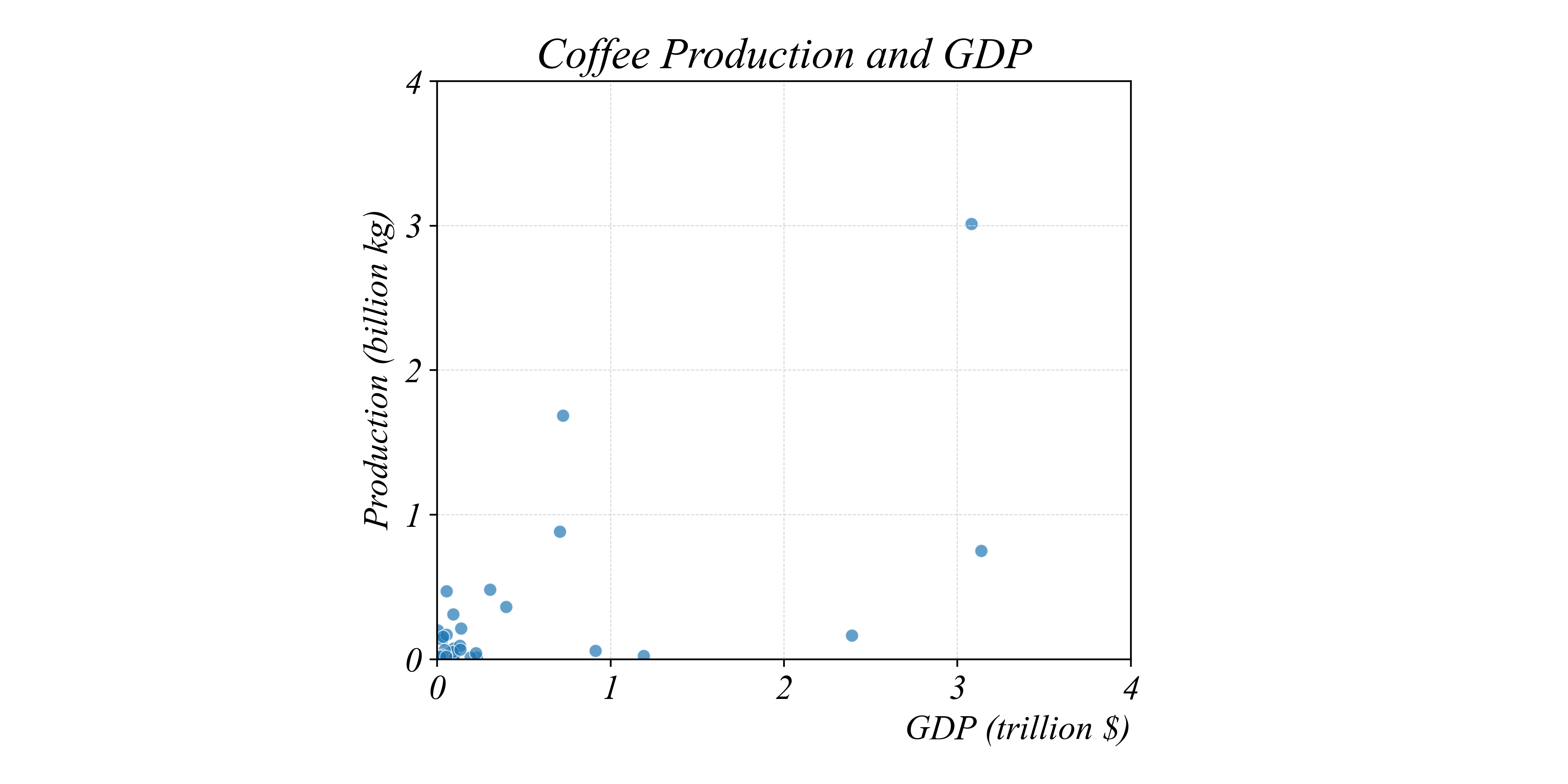
> a scatterplot effectively visualizes scross sectional data with two dimensions
Cross-Sectional Relationships
Which countries have a GDP above $2 trillion?

> look at the horizontal axis and select all that are greater than 2
Cross-Sectional Relationships
Which countries have a GDP above $2 trillion?
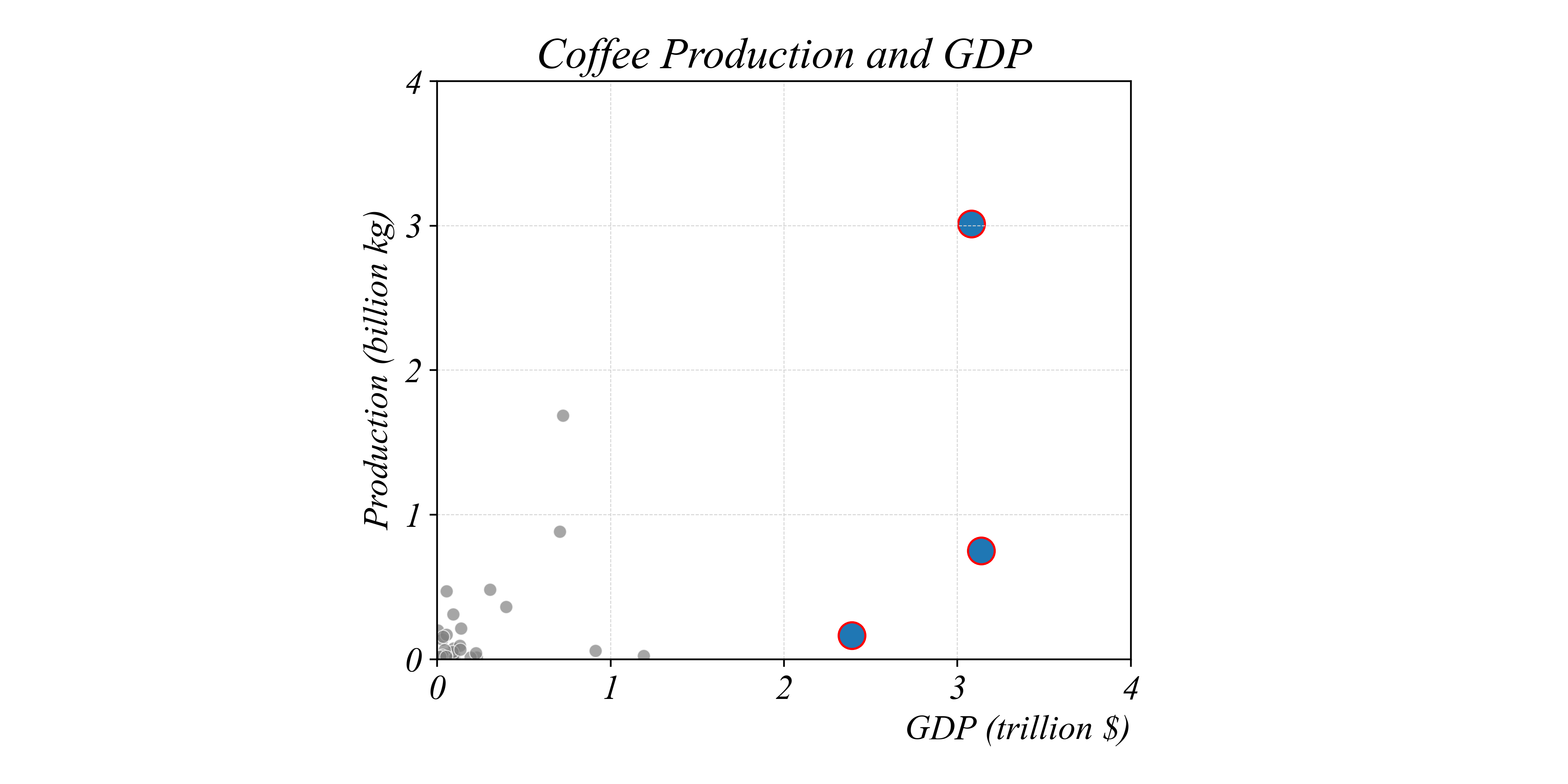
> look at the horizontal axis and select all that are greater than 2
Cross-Sectional Relationships
Which countries have a production above ½ billion kg?

> and we can use either axis
Cross-Sectional Relationships
Which countries have a production above ½ billion kg?

> and we can use either axis
Cross-Sectional Relationships
Which countries produce less coffee per dollar than Brazil?

> we can also compare BETWEEN data points
Cross-Sectional Relationships
Which countries produce less coffee per dollar than Brazil?

> we can also compare BETWEEN data points
Cross-Sectional Relationships
Which countries produce less coffee per dollar than Brazil?
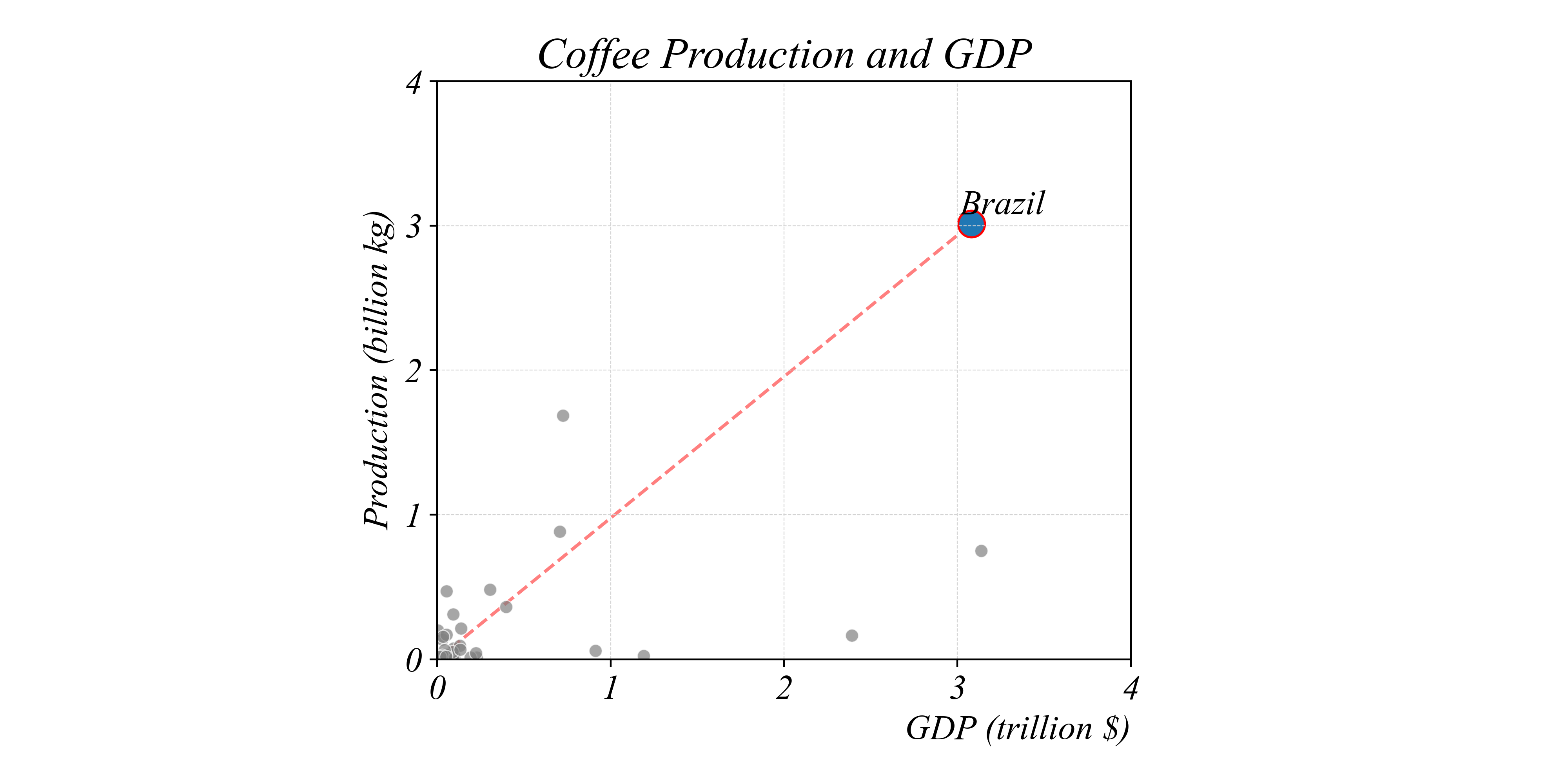
> separating lines can help make comparisons between ratios
Cross-Sectional Relationships
Which countries produce less coffee per dollar than Brazil?

> separating lines can help make comparisons between ratios
Cross-Sectional Relationships
Which countries produce more coffee per dollar than Brazil?

> separating lines can help make comparisons between ratios
Cross-Sectional Relationships
Which countries produce more coffee per dollar than Brazil?
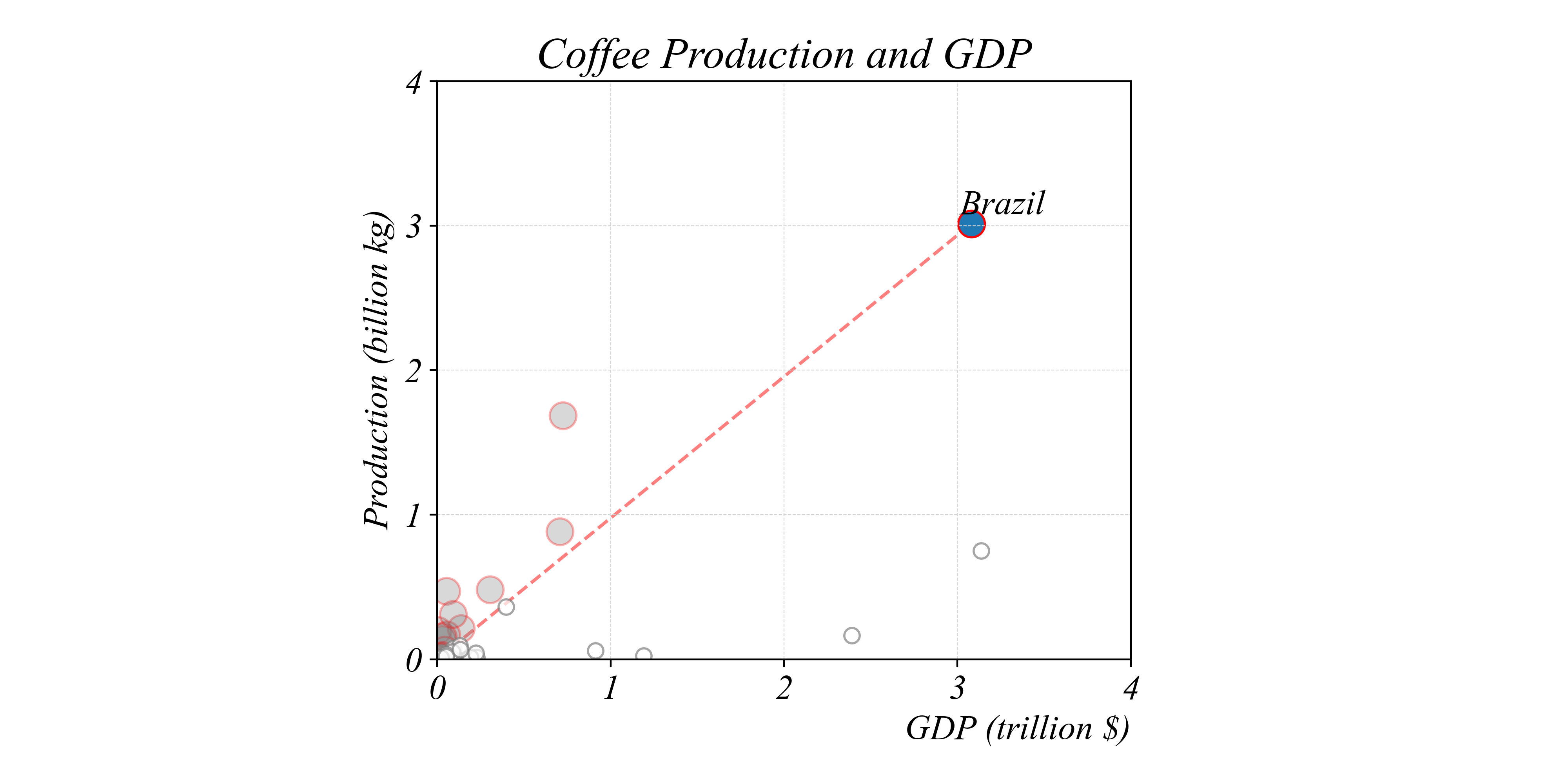
> separating lines can help make comparisons between ratios
Cross-Sectional Relationships
Do the GDPs of the upper or lower pair differ by a larger amount?

> use the differences on the horizontal axis to measure differences
Cross-Sectional Relationships
Which is larger: the ratio of GDPs of the upper or lower pair?

> this question is difficult to answer with this scale
Cross-Sectional Relationships
Which is larger: the ratio of GDPs of the upper or lower pair?
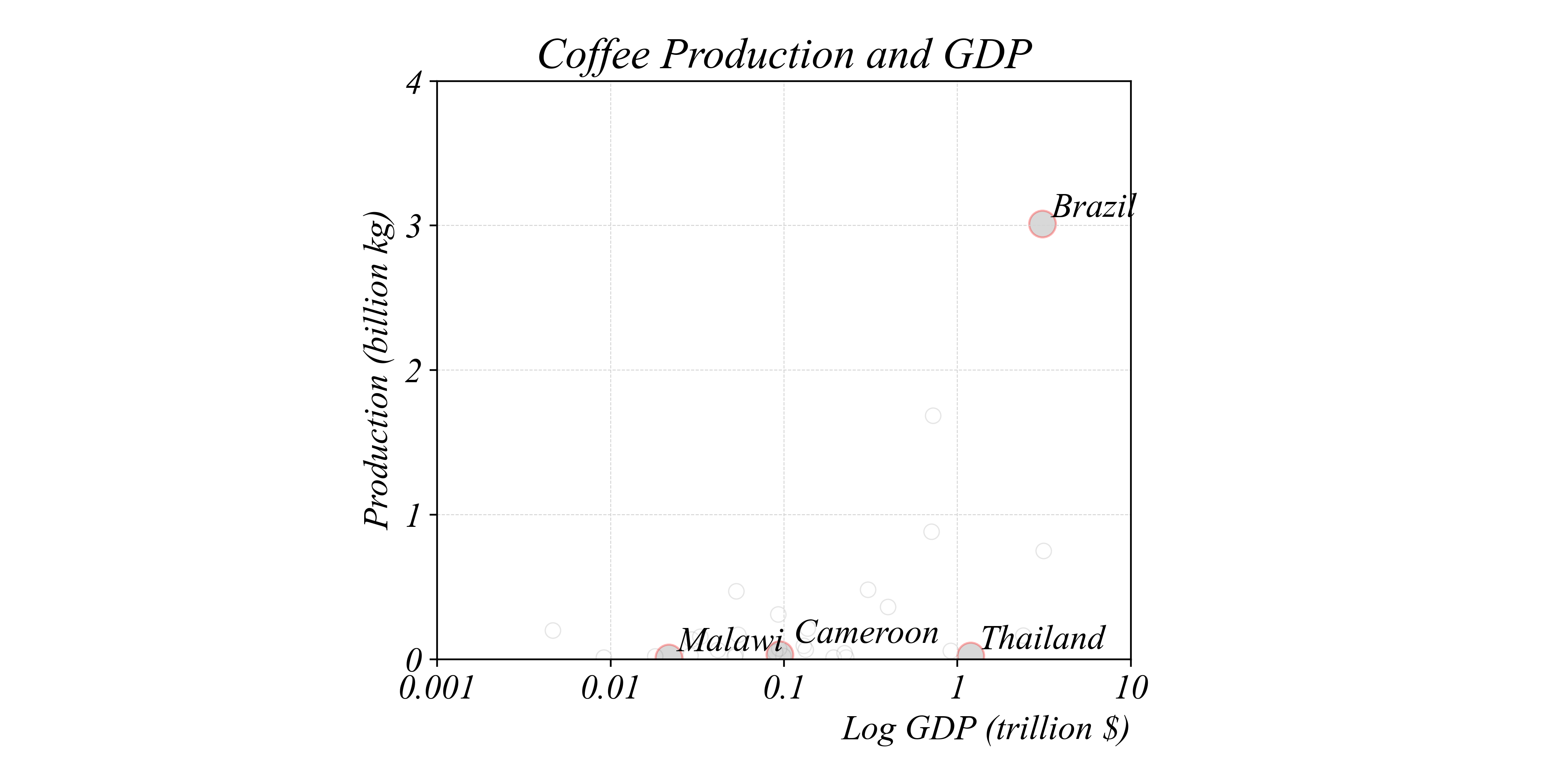
> a log scale makes RATIOS easier to visualize: each tick is 10x larger
Cross-Sectional Relationships
Which country produces the second highest output of coffee?

> a log scale also makes it easier to see SCALING
Cross-Sectional Relationships
Which country produces the second highest output of coffee?
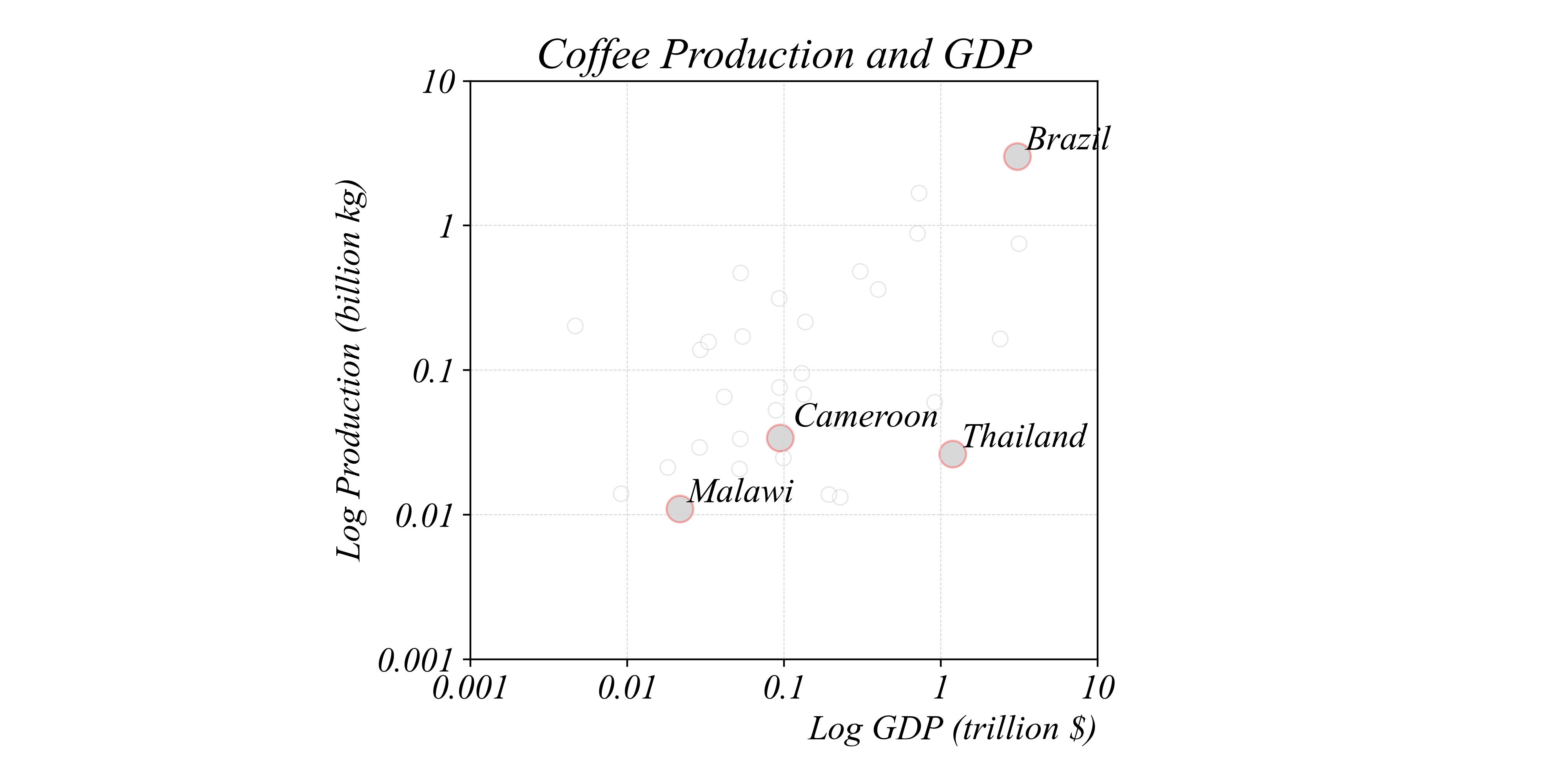
> scaling the vertical axis in logs clarifies both small and large variation
Cross-Sectional Relationships
How does GDP relate to coffee production in the Americas?
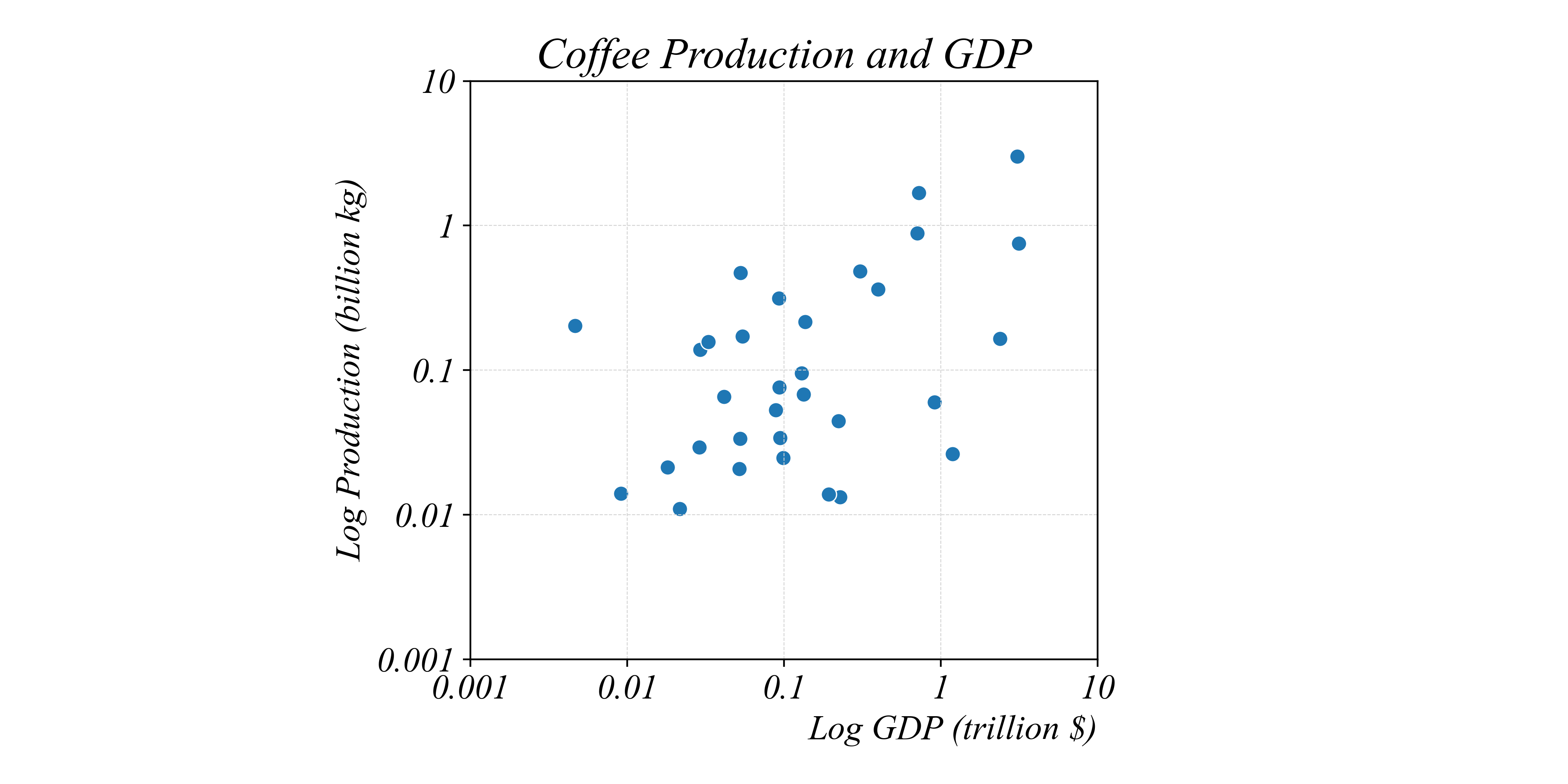
> lets use a filter with this data
Cross-Sectional Relationships
How does GDP relate to coffee production in the Americas?
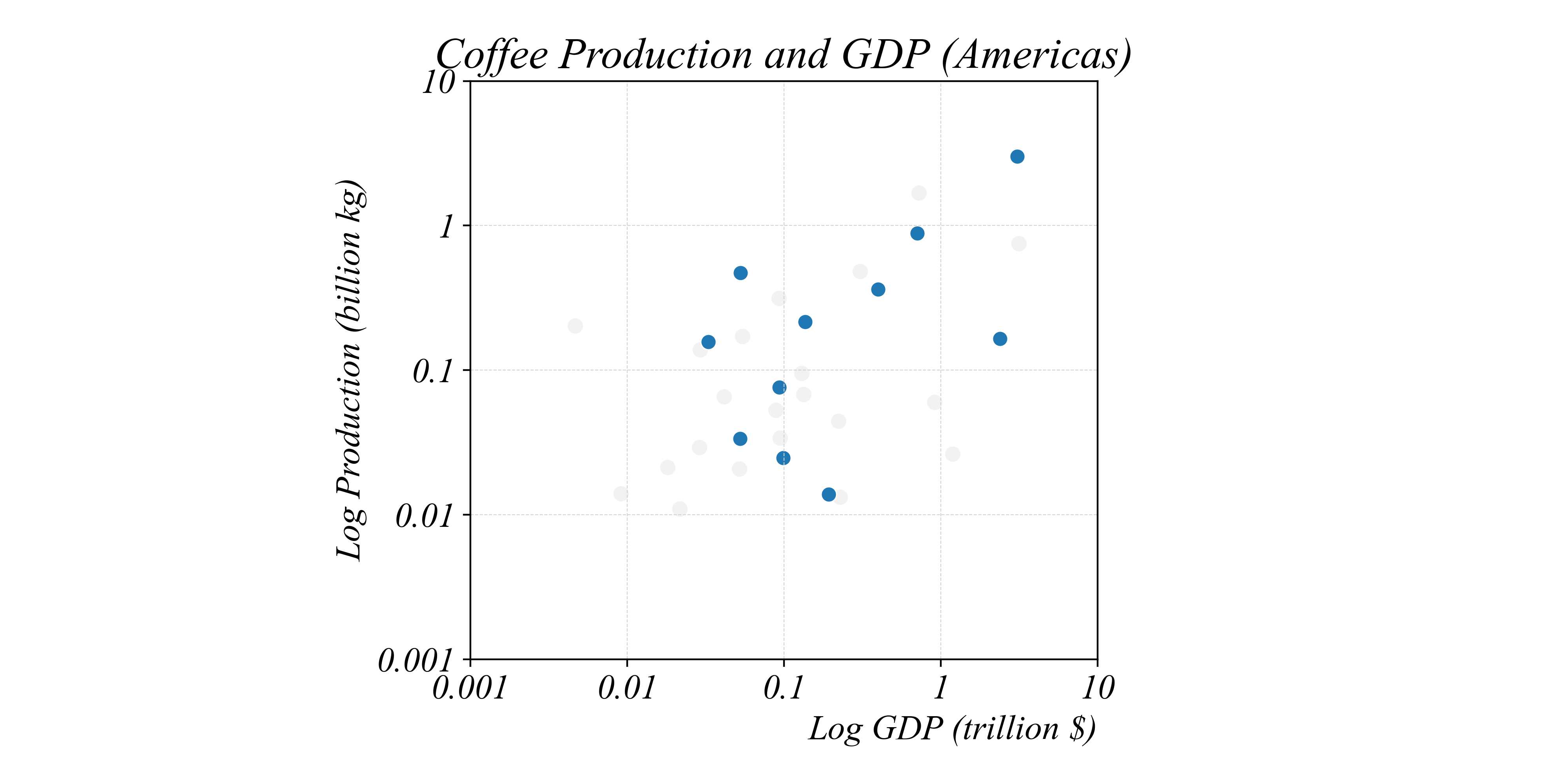
> looks positive, but we’ll formally test this in Part 4
Cross-Sectional Relationships
Which country in the Americas produces the most coffee?

> looks positive, but we’ll formally test this in Part 4
Cross-Sectional Relationships
Which country in the Americas produces the most coffee?
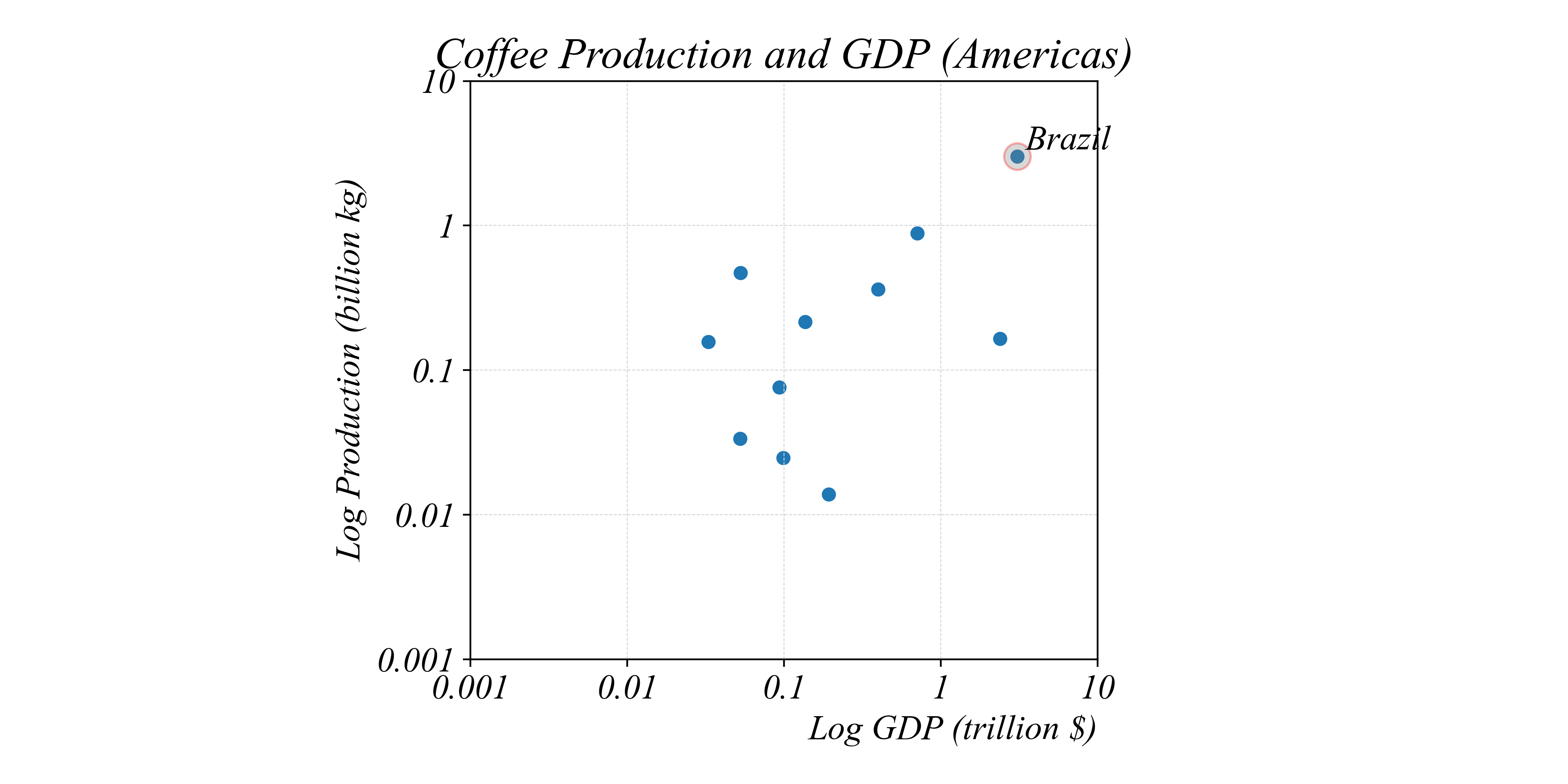
>
Cross-Sectional Relationships
Which country’s GDP is closest to Brazil’s GDP?

> we can use the horizontal axis
Cross-Sectional Relationships
Which country’s GDP is closest to Brazil’s GDP?
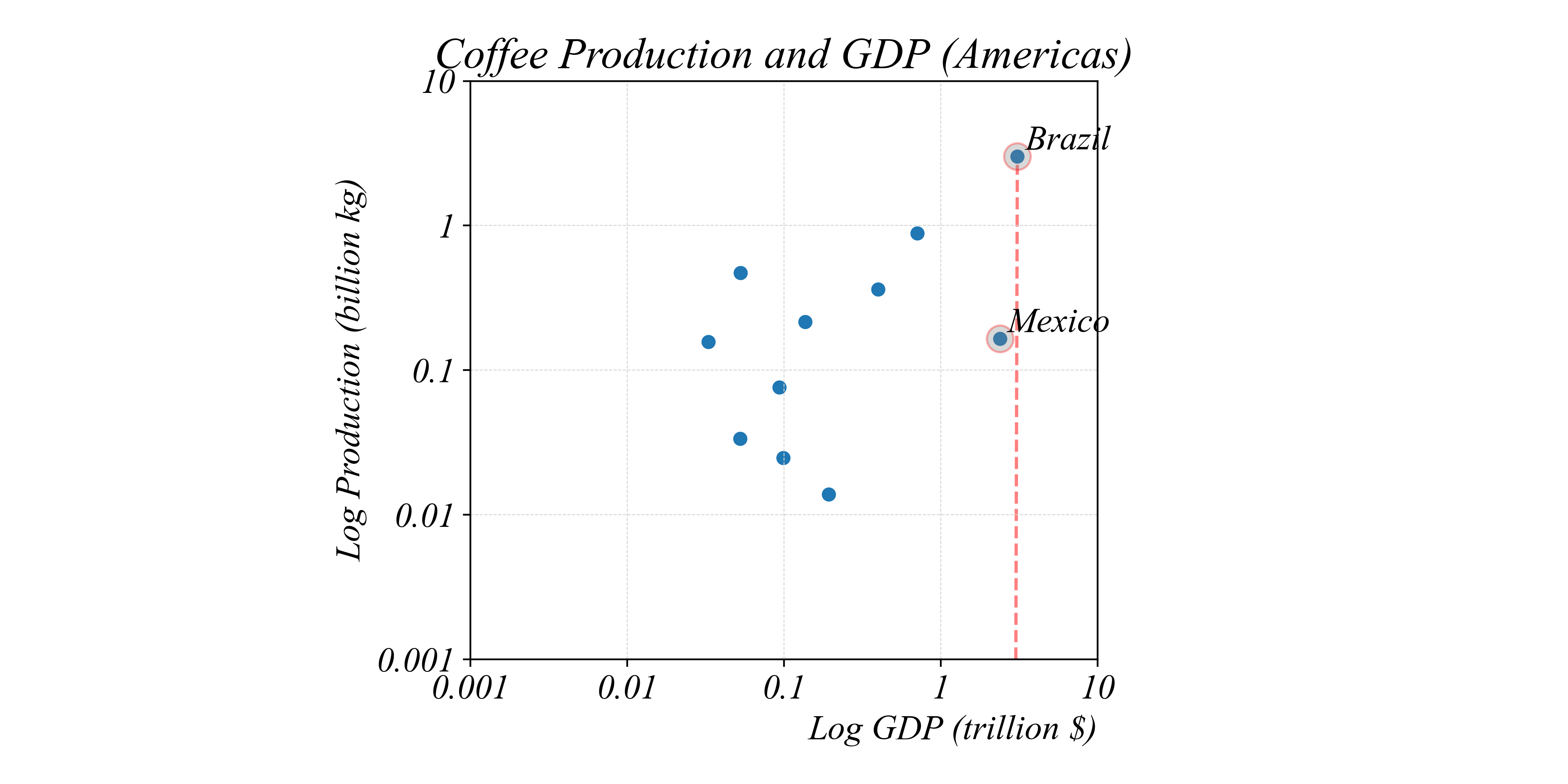
> we can use a vertical line here to find the closest on the horizontal axis
Summary
- Relationships between two variables can be easily summarized in scatterplots.
- Scatterplots make it easy to visually filter either axis.
- Scatterplots make it easy to compare absolute differences by axis.
- A log-scale transformation makes it easy to compare ratios.
- A log-log-scale makes it easy to see variation in both large and small values.
Exercise: Cross-Sectional Scatterplots
Visualizing GDP and Coffee Production Relationships
We’re going to use a scatterplot to visually examine the relationship between coffee production and GDP.
- Data:
Beans_GDP_2019.csv
Exercise: Cross-Sectional Scatterplots
Visualizing GDP and Coffee Production Relationships
Timeseries Relationships
How do the two commodity prices relate to each other?
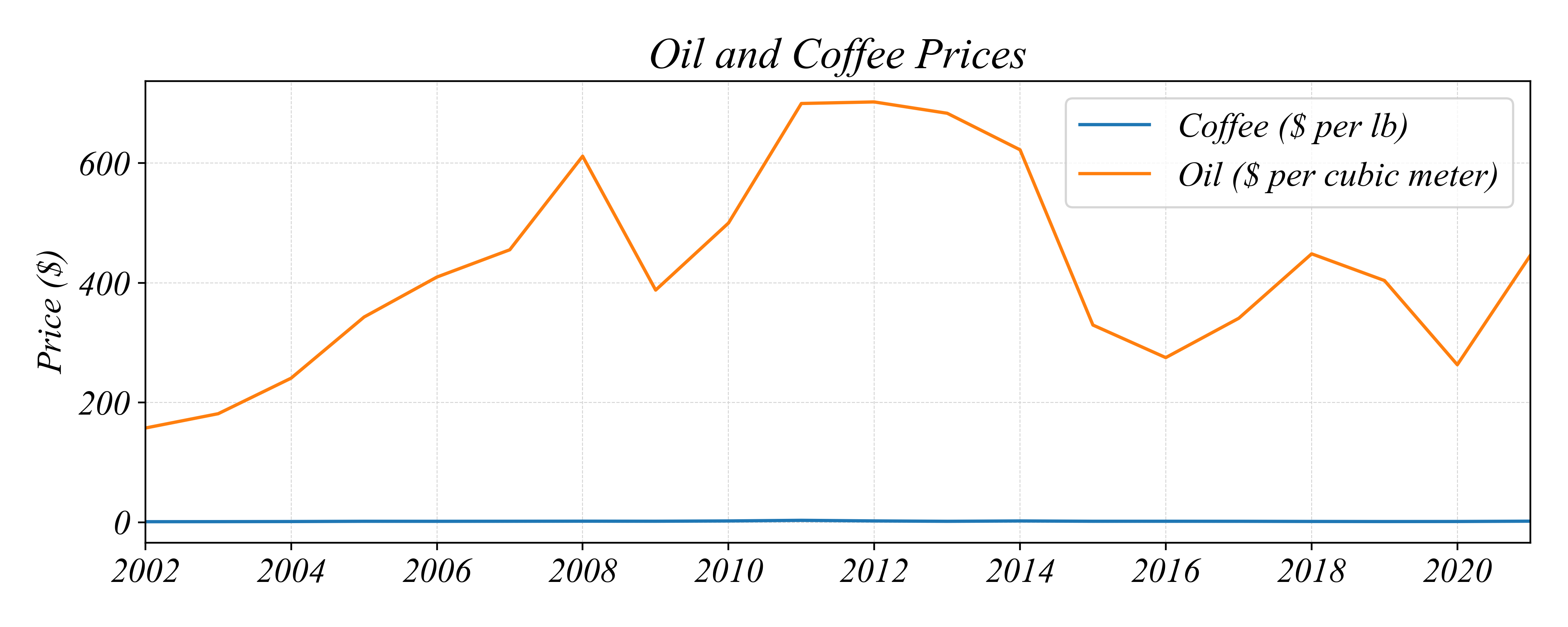
> difficult to tell because of the axis scale
Timeseries Relationships
How do the two commodity prices relate to each other?
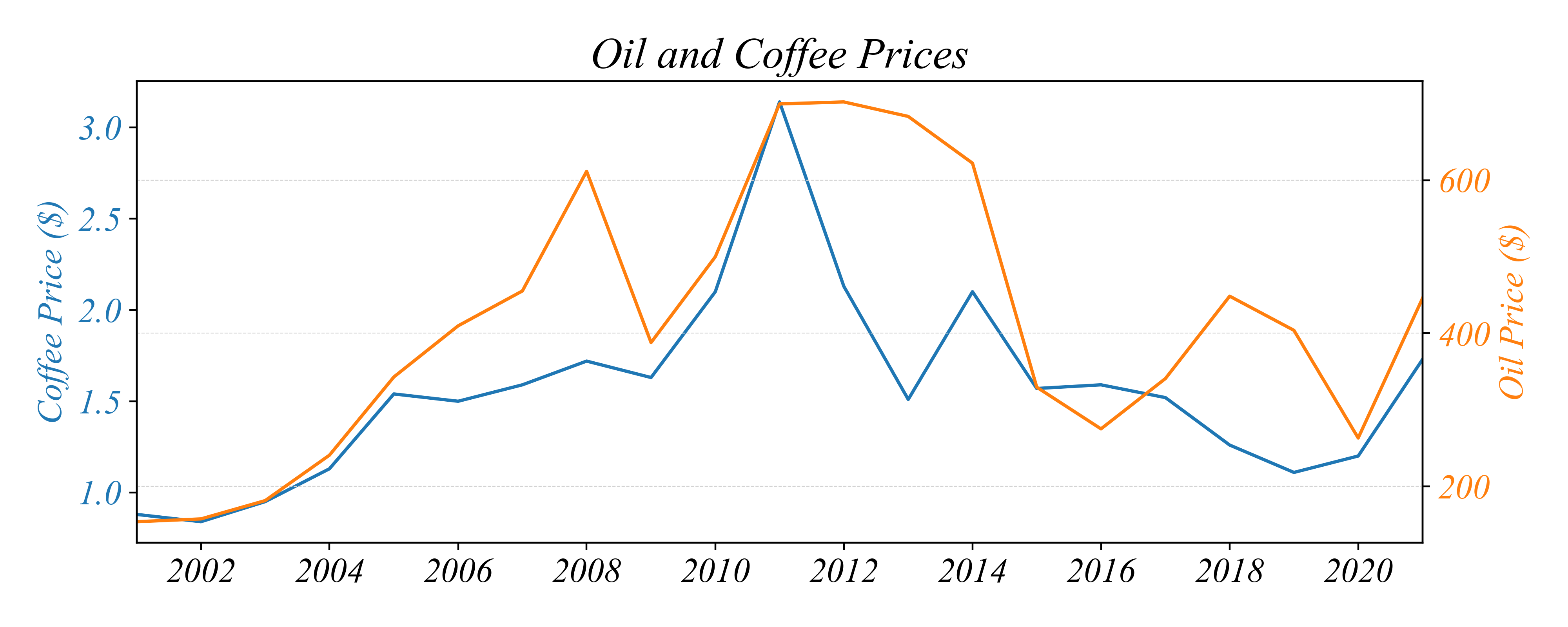
Timeseries Relationships
In which years did oil and coffee prices move in opposite directions?

Timeseries Relationships
In which years did oil and coffee prices move in opposite directions?
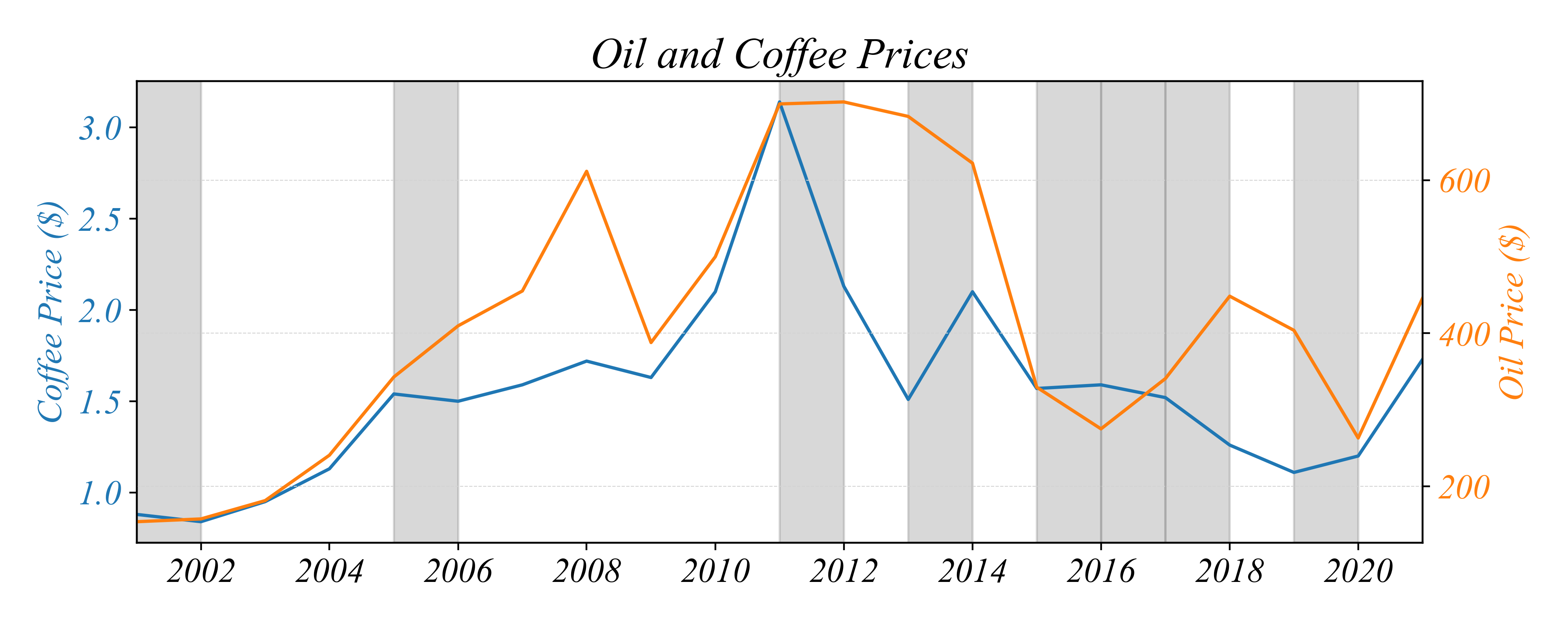
Timeseries Relationships
But are the two prices positively or negatively related to each other?

> this is difficult to see with just a Multi-Lineplot…
Timeseries Relationships
But are the two prices positively or negatively related to each other?
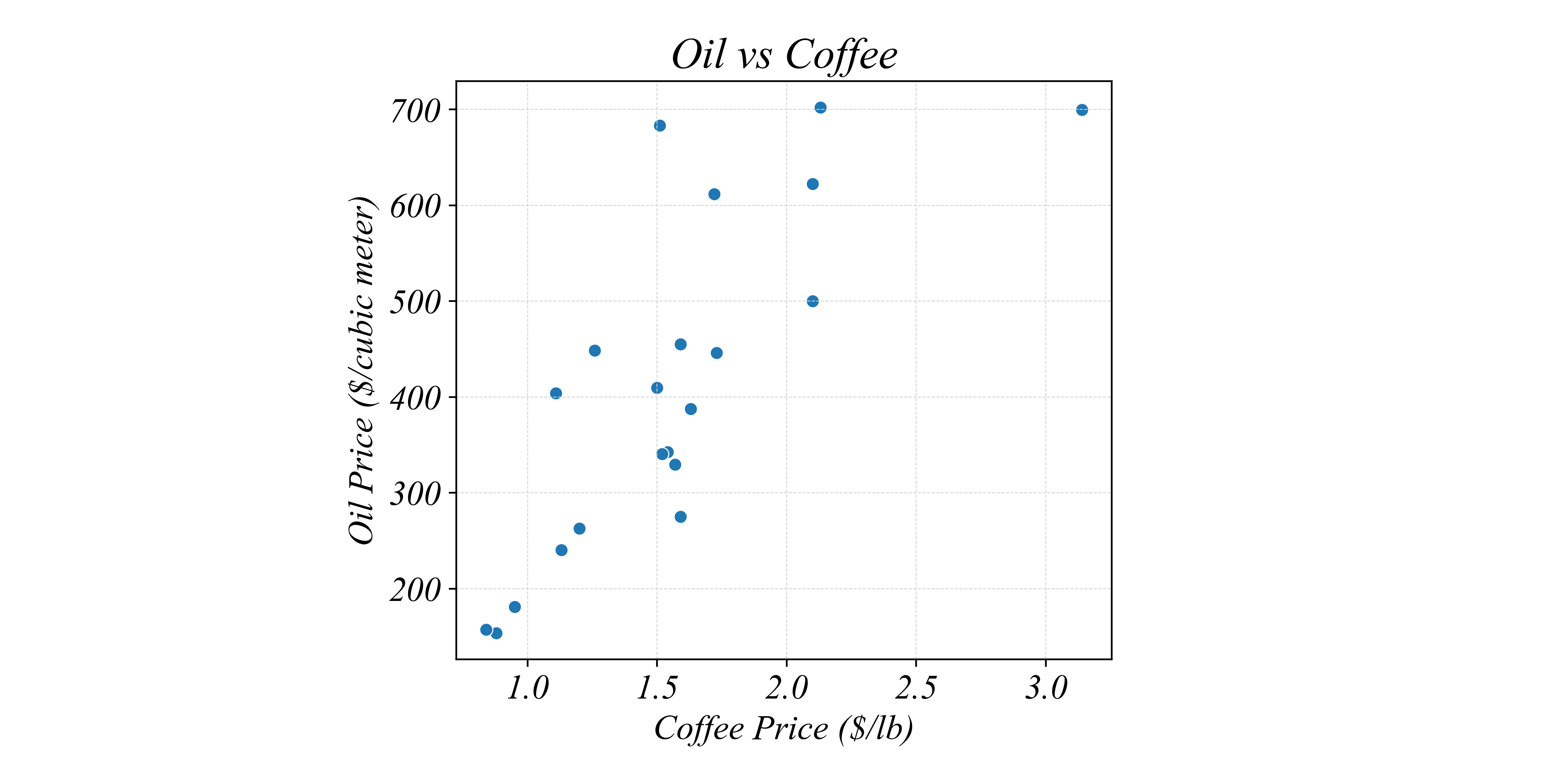
> a Scatterplot can show the relationship between two variables through time
Timeseries Relationships
Does the price of oil determine the price of coffee?

> a Scatterplot can only show associations not causation :(
Exercise: Timeseries Scatterplots
Visualizing Coffee Prices and Oil Prices
We’re going to use a scatterplot to visually examine the relationship between coffee prices and oil prices.
- Data:
Coffee_Oil.csv
Exercise: Timeseries Scatterplots
Visualizing Coffee Prices and Oil Prices